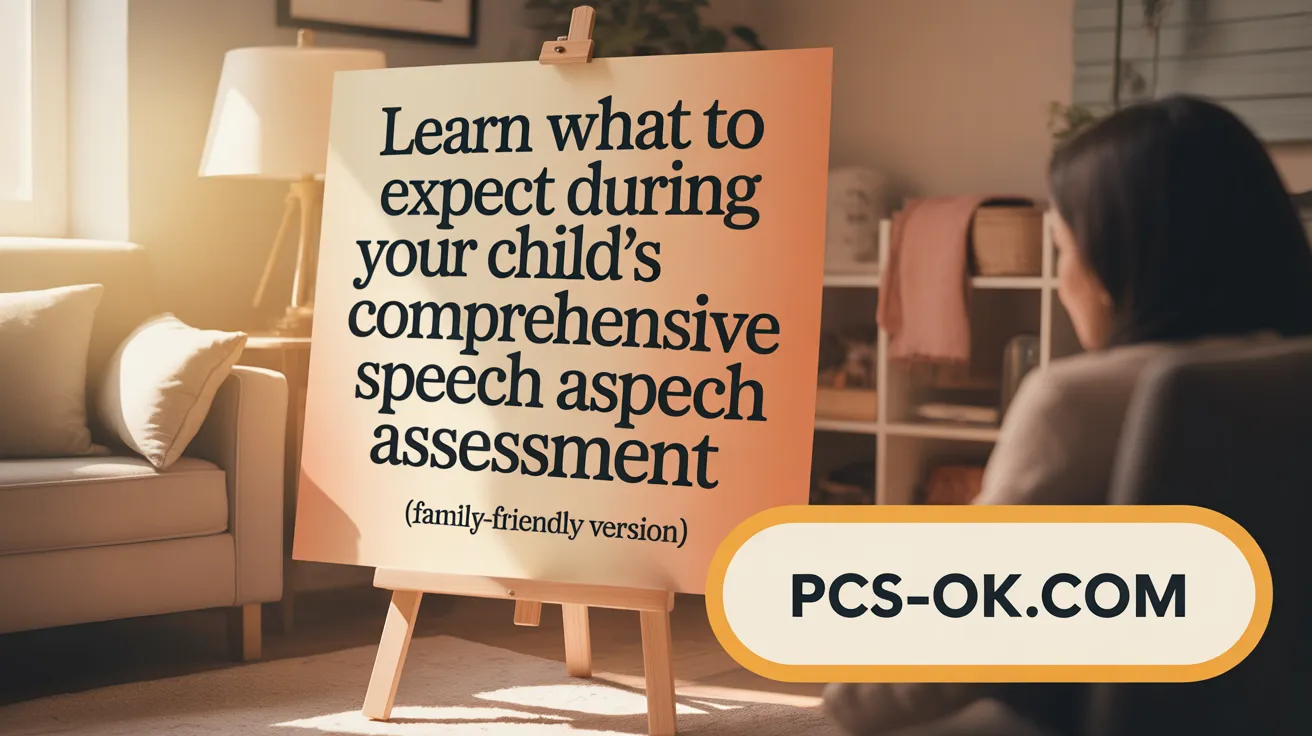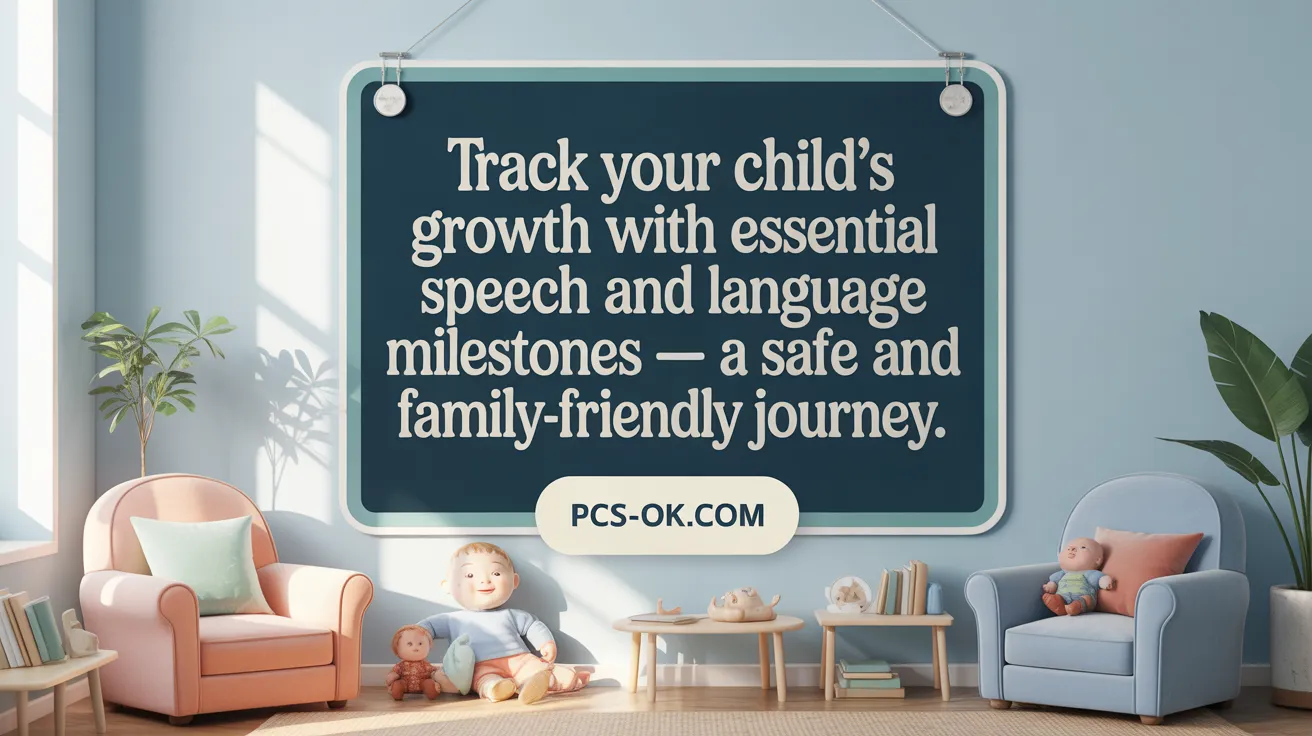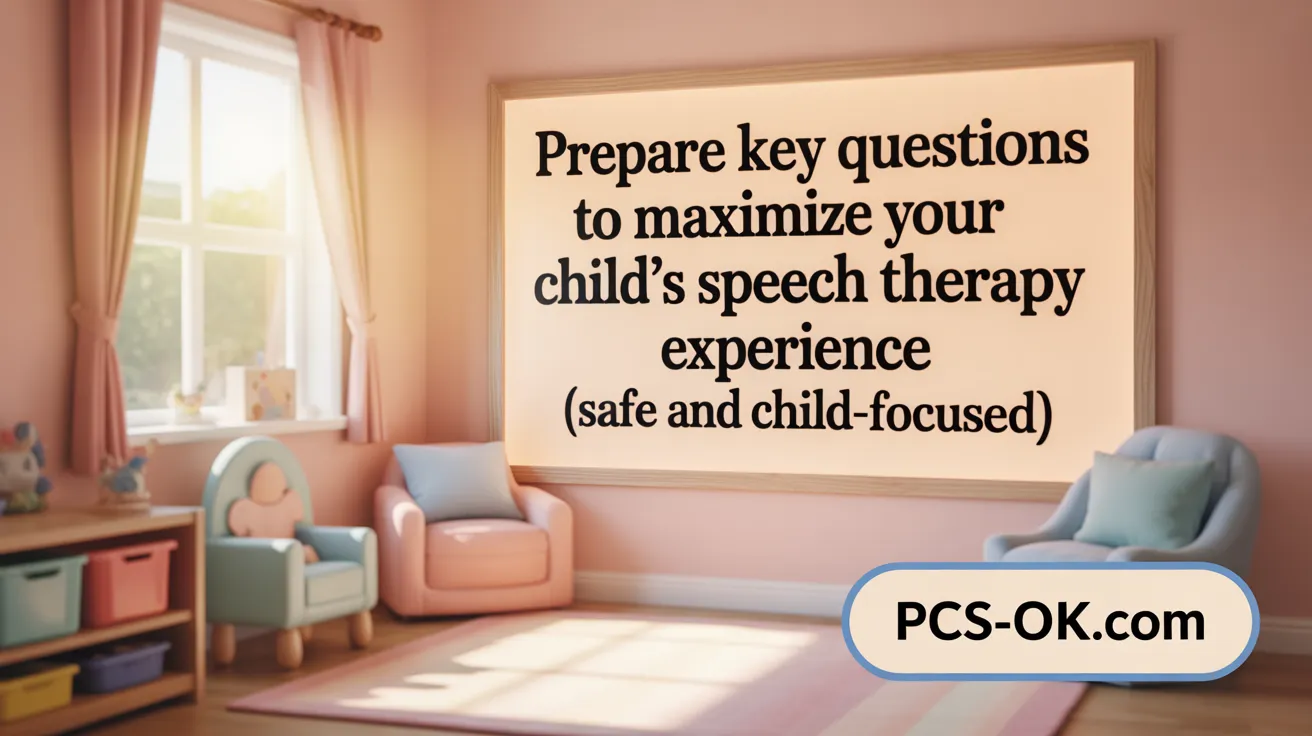Top Questions Parents Ask About Speech Therapy Evaluations
Understanding Speech Therapy Evaluations: A Guide for Parents
Navigating the process of speech therapy evaluations can be overwhelming for parents concerned about their child’s communication development. This guide addresses the most common questions parents ask—from identifying signs that indicate a need for evaluation to understanding the evaluation process itself. We also explore how parents can prepare and what to expect during assessments, ensuring they are well-equipped to support their child’s speech and language growth effectively.
Recognizing When a Child Needs a Speech Therapy Evaluation
What are common signs indicating a child may need a speech therapy evaluation?
Parents should observe their child’s communication skills closely. Signs that suggest a speech therapy evaluation might be essential include difficulty pronouncing words, forming sentences, or understanding language appropriate for their age.
One of the earliest indicators is a delay in reaching significant speech milestones. For instance, if a child hasn’t said their first words by around 12 to 15 months or isn’t combining words by ages two or three, it warrants attention.
Other signs include a limited vocabulary, frequent stuttering, or speech that is difficult for others to understand.
Behavioral signs can also signal the need for professional assessment, such as trouble following instructions or engaging in social interactions.
Additional concerns include persistent articulation or comprehension issues. If a child demonstrates two or more of these signs or if a parent or pediatrician feels concerned, consulting a speech-language pathologist is advisable.
Early evaluation can help identify whether the child has a speech or language delay, language difference, or a potential disorder that may benefit from targeted therapy.
What Happens During a Speech Therapy Evaluation?

Overview of evaluation process
A speech therapy evaluation is a comprehensive process that helps identify a child’s communication strengths and weaknesses. It begins with gathering detailed developmental and medical histories from parents about the child’s milestones, health, and any previous services received. The evaluator, typically a speech-language pathologist, then observes the child’s speech, language, social skills, and oral motor functions through a mix of standardized tests, informal assessments, and direct observations.
This process typically lasts up to two hours and provides a clear picture of where the child stands relative to age-matched peers. It includes reviewing developmental milestones, hearing status, and family history to understand potential factors influencing speech and language skills.
Types of assessments and observations
Assessments incorporate various methods such as standardized tests that compare the child’s skills with established norms, and informal observations during play or conversation. The evaluator looks closely at how the child produces speech sounds, follows instructions, and interacts socially.
Work samples, like speech recordings and language samples, are analyzed for clarity, vocabulary use, and sentence structure. These assessments help distinguish between language differences due to cultural or linguistic background and true language disorders.
Parental involvement in the evaluation
Parents are essential partners in this process. During the evaluation, the speech therapist interviews parents or caregivers to gather insights on early milestones, daily activities, progress, and concerns. Questions probe issues like limited vocabulary, attention span, and understanding of social cues.
Parental input offers context and helps clarify the child’s communication patterns across different settings. After the assessment, parents receive a detailed report outlining the child’s abilities, recommended next steps, and strategies for supporting development at home.
Discussion of results and next steps
Once assessments are complete, the speech-language pathologist discusses the findings with the parents, highlighting areas of strength and difficulties. If a delay or disorder is diagnosed, a tailored therapy plan is proposed, involving short-term and long-term goals.
The evaluation results guide decisions about therapy initiation, additional assessments if needed, and involvement of other professionals, such as audiologists or occupational therapists. Parental support and home practice are emphasized, as progress relies heavily on consistent engagement outside of therapy sessions.
Follow-up involves monitoring the child’s progress through periodic reassessments, adjusting goals, and encouraging ongoing practice to promote effective communication skills.
| Aspect | Details | Purpose |
|---|---|---|
| Duration | Up to 2 hours | Efficient yet thorough assessment |
| Assessments | Standardized tests, observations, work samples | Measure skills against norms |
| Parental input | Interviews, sharing developmental history | Contextual understanding |
| Results | Findings, diagnosis, recommendations | Guide therapy planning |
| Follow-up | Reassessments, goal adjustments | Ensure continued progress |
This comprehensive evaluation process sets the foundation for effective speech and language therapy, tailored to each child’s unique needs.
Preparing for a Speech Therapy Assessment: Practical Tips for Parents
How can parents prepare their child for a speech therapy assessment?
Parents can help their children feel comfortable and ready for a speech therapy assessment by ensuring the child is well-rested on the day of the appointment. Bringing familiar comfort items or favorite toys can make the environment feel less intimidating. It’s also beneficial to prepare by gathering a detailed developmental history, including when the child first started talking, any feeding issues, and previous speech therapy experiences if applicable.
Before the evaluation, parents should complete any paperwork provided by the therapist to streamline the process. Preparing a list of questions about what the assessment involves, the goals of therapy, and ways to support their child’s progress at home can also be helpful. For online assessments, set up a quiet, distraction-free space with reliable internet access. Position the camera at a good angle so the therapist can observe the child clearly.
Finally, being present during the session allows parents to share essential background information, observe how their child responds, and offer reassurance. Support from parents during and after the assessment helps set a positive foundation for the steps ahead.
Understanding Speech and Language Development Milestones

What developmental milestones are related to speech and language in children?
Children typically go through several important stages in their communication development. In the early months, newborns begin cooing and responding to sounds, which usually occurs between birth and 3 months. By around 4 to 6 months, most babies start babbling and can recognize familiar voices, laying the foundation for speech.
At about 12 months, children often say their first words and can understand simple instructions. Their vocabulary starts to grow quickly between 18 and 24 months as they begin to combine words and imitate speech patterns. During this period, toddlers usually use two-word phrases and expand their language comprehension.
Between ages 2 and 3, kids typically employ three- to four-word sentences, grasp basic concepts, and start asking questions. This is also when they start understanding more complex instructions.
Preschool-aged children (3-4 years) develop the ability to form more detailed sentences, recognize colors and shapes, and tell simple stories. By the time children are 4 to 5, they tend to use longer sentences, understand concepts such as time sequencing, and participate in conversations.
Monitoring these milestones is vital for early detection of reception or expressive language difficulties. Recognizing delays early allows for timely interventions, which can significantly improve communication skills.
Importance of monitoring speech clarity and comprehension
Assessing how well children speak and understand language at various stages helps identify those who might need further evaluation. Children should be understandable at least 50% of the time by age 2 and 70-90% by age 3. Poor speech clarity or limited comprehension can signal underlying issues requiring professional support.
Impact of habits like pacifier use and thumb-sucking
While normal for children under two, habits like pacifier use and thumb-sucking can influence speech development if they persist when a child begins talking. These behaviors may affect tongue movement, muscle strength, and reduce opportunities for practicing speech, which can hinder articulation and clarity. Once children start talking regularly, it is advisable to encourage them to stop these habits to promote better speech development.
The Role and Purpose of Speech and Language Questionnaires

How do questionnaires inform evaluations?
Speech and language questionnaires are essential tools used during child evaluations to gather detailed insights from parents, caregivers, and teachers. These forms collect information on a child’s developmental milestones, communication behaviors, and exposure to different languages. This data helps clinicians identify possible delays or disorders by providing a comprehensive view of the child’s communication skills across different settings and over time.
Questionnaires typically include questions about early speech milestones, vocabulary development, social communication skills, and any concerns about articulation or understanding. The responses guide speech-language pathologists in planning assessments, pinpointing specific areas that need attention, and setting realistic goals for therapy.
Overall, these forms enrich the evaluation process, enabling more accurate diagnoses and tailored treatment plans.
How do cultural sensitivity and multilingual considerations play a role?
In diverse populations, cultural and language differences are taken into account when designing and administering questionnaires. They are adapted into multiple languages and formatted to be culturally relevant, avoiding misunderstandings that may arise from differences in communication styles or norms.
This multilingual approach ensures that parents and caregivers can provide honest and precise information, which is crucial for an accurate assessment. Recognizing that bilingual or multilingual children may have different developmental timelines, questionnaires also help distinguish typical language variation from a potential disorder.
Culturally sensitive tools promote trust and ensure that evaluations are fair and valid for children from all backgrounds.
How does parent and caregiver input support an accurate diagnosis?
Parents and caregivers are considered the child’s primary observers of their communication development. Their insights are invaluable because they see the child’s behavior across various environments and over extended periods.
In evaluations, their detailed responses help determine whether speech and language delays are consistent or situational, and whether they reflect a true disorder or typical variation.
Questions focus on early growth, family history, daily routines, and social interactions, offering a rich context for understanding the child’s overall communication profile. This involvement makes the assessment holistic and ensures that recommendations are personalized.
By actively participating in the evaluation process through questionnaires, parents become partners in planning, supporting home-based strategies that reinforce therapy goals.
| Aspect | Details | Additional Notes |
|---|---|---|
| Purpose of Questionnaires | Gather comprehensive info on communication skills and behaviors | Guides assessment and planning |
| Cultural/Gateway Considerations | Use of multiple languages, culturally relevant questions | Ensures fairness and accuracy |
| Parental Role | Providing observational insights | Crucial for accurate diagnosis |
| Additional Aspects | Developmental milestones, family history, daily routines | Help differentiate between language difference and disorder |
Communicating Your Child’s History Effectively to the Speech-Language Pathologist

How should parents describe their child’s speech, language, and developmental history to a speech-language pathologist?
When preparing to share information about their child’s communication development, parents should aim to give a detailed and organized overview. Start by noting the earliest signs of communication, such as cooing, babbling, and when the child first said recognizable words. Include the ages at which key milestones were achieved, like sitting, crawling, standing, and walking.
It’s also crucial to report any medical history that could influence speech development, such as hearing issues, visual problems, illnesses, or hospital stays. Details about motor skills milestones help clarify overall development. These include self-help skills like feeding, dressing, and toileting.
Parents should describe their child’s current communication abilities, including vocabulary size, ability to follow instructions, and usage of gestures or communication aids. Information about language exposure at home—whether bilingual or multilingual—and daily routines can provide important context.
Sharing observations on social behaviors, interaction styles, and behavior patterns also informs the assessment. Note any concerns or behaviors that seem atypical or require attention.
Overall, an organized and comprehensive account of your child’s developmental history aids the speech-language pathologist in accurately evaluating needs and planning effective interventions.
Engaging with Speech-Language Pathologists: Key Questions for Parents

What important questions should parents consider asking during the speech therapy evaluation process?
When parents take their child to a speech-language pathologist, being prepared with the right questions can make a significant difference. A crucial part of the evaluation is understanding what methods and tools the therapist will use to assess the child’s communication skills. Parents should ask about the specific assessment procedures, including whether standardized tests or informal observations will be employed.
It is also helpful to inquire about how the results will be used to create a treatment plan. Clarifying the diagnosis, if there is one, and understanding how therapy goals are set can help parents see the bigger picture.
Furthermore, parents should ask about the therapist’s credentials, especially their experience with children showing similar speech or language challenges. Knowing the typical duration of therapy and session frequency can help set realistic expectations.
Support questions include how parents can assist at home, what techniques might be used during sessions, and how progress will be measured. Insurance coverage, costs, and access to additional resources or local support groups are practical topics to discuss for comprehensive planning.
Gathering detailed information upfront empowers parents to be active participants in their child’s communication development and ensures a smoother therapy journey.
Supporting Your Child Beyond the Evaluation
A speech therapy evaluation marks the critical first step in identifying and addressing speech and language challenges. Equipped with a thorough understanding of the signs to watch for, what the evaluation entails, and how to actively participate, parents play an essential role in their child’s communication journey. Continued involvement through home practice, open communication with therapists, and informed decision-making can significantly enhance progress. Ultimately, early recognition and intervention provide children with the best opportunity to strengthen their speech and language skills, fostering confident communication throughout life.
References
- Five Most Common Questions Parents Ask about their …
- Signs Your Child May Need a Speech Therapy Evaluation
- Frequently Asked Questions | Rady Children’s Health
- 5 Common Questions and Answers About Speech Therapy
- The Critical Questions- Early Intervention
- How Do I Prepare for My Speech-Language Pathology Visit
- What Is a Speech Therapy Evaluation for Children and …
- What to Expect at a Speech Evaluation
- When Your Child Needs a Speech Therapy Evaluation …
